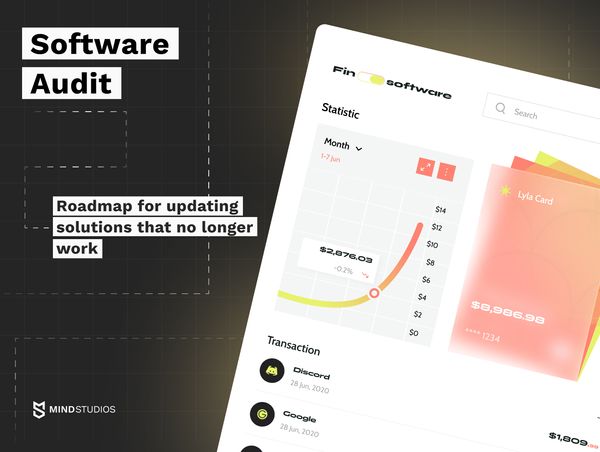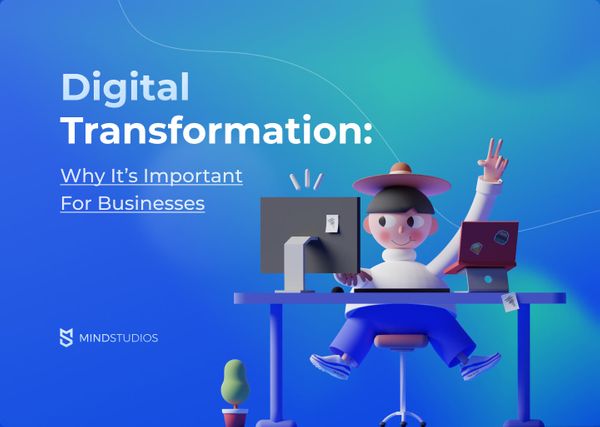
What is digital transformation? The answer might vary depending on who you ask. But what many business owners have in common when it comes to digital transformation is that they recognize its impact but are hesitant to undertake it.
In this article, we talk about the advantages of digital transformation and how to go about building a solid digital transformation strategy for your business.
What is digital transformation?
That’s a tricky question. Here’s a very general answer:
Digital transformation is a process of implementing digital solutions into your business to create a better experience for your customers and employees.
Sounds relatively simple, but that’s where the trick lies.
Is it enough to transfer your documentation from paper to digital formats? Maybe use instant messengers for communication instead of having people wander around relaying messages and assigning tasks in person? Communicate with customers via email?
The answer to all of the above is no, it’s not enough. That’s not what digital transformation is.
Difference between Digitization, Digitalization, and Digital Transformation
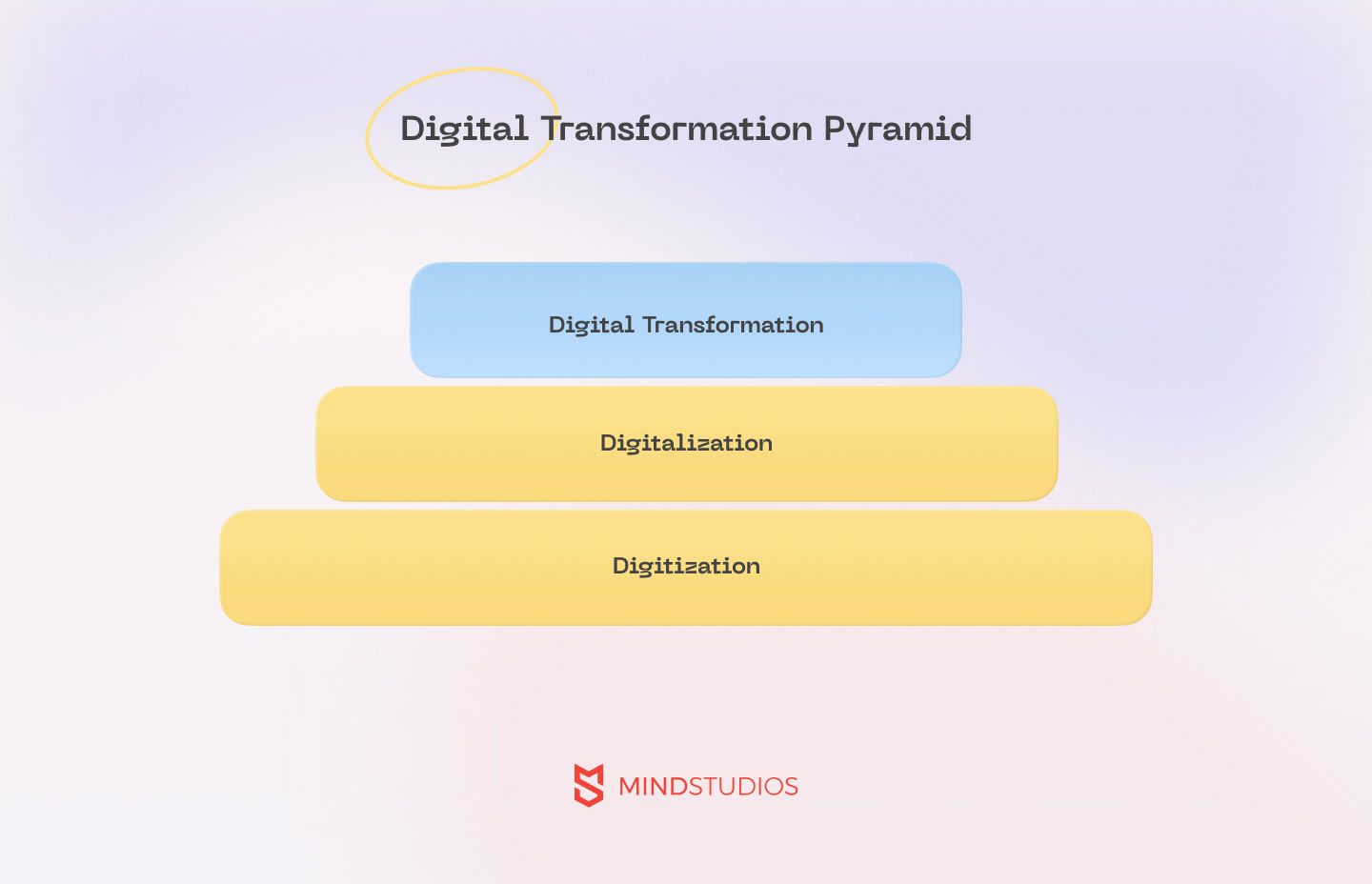
“Digital transformation” is a hot mess of a term in business. Everyone understands it differently and many confuse digital transformation with either digitization or digitalization (or both). Here’s a very short explanation of the three:
-
Digitization is transferring data from physical form to digital. This essentially means switching from paper documents to digital ones.
-
Digitalization is the use of digitized data, so it’s a process that naturally follows digitization. It also includes the use of digital means of communication and scattered work-related tools. Digitization and digitalization combined make businesses less cluttered, but that’s about it.
-
Digital transformation is the process of implementing digital solutions into all areas of a business, from customer communication to manufacturing to management. Such a fundamental change leads to a major shift in operations.
With the development of technology, digital solutions have become not just a set of tools to use in business but a way of thinking. Today, digital must be woven into the core of the business — that is, if the business aims to thrive. That’s why it’s called digital transformation — it transforms the business from the inside instead of polishing its veneer.
To summarize definitions by digital transformation consultants:
Digital transformation is a set of practices, services, and tools that change at the core the way a business interacts with its customers, employees, and partners to better reflect the current demand for quality communication and service.
Depending on the kind of business, digital transformation strategies may vary greatly.
Why is digital transformation important?
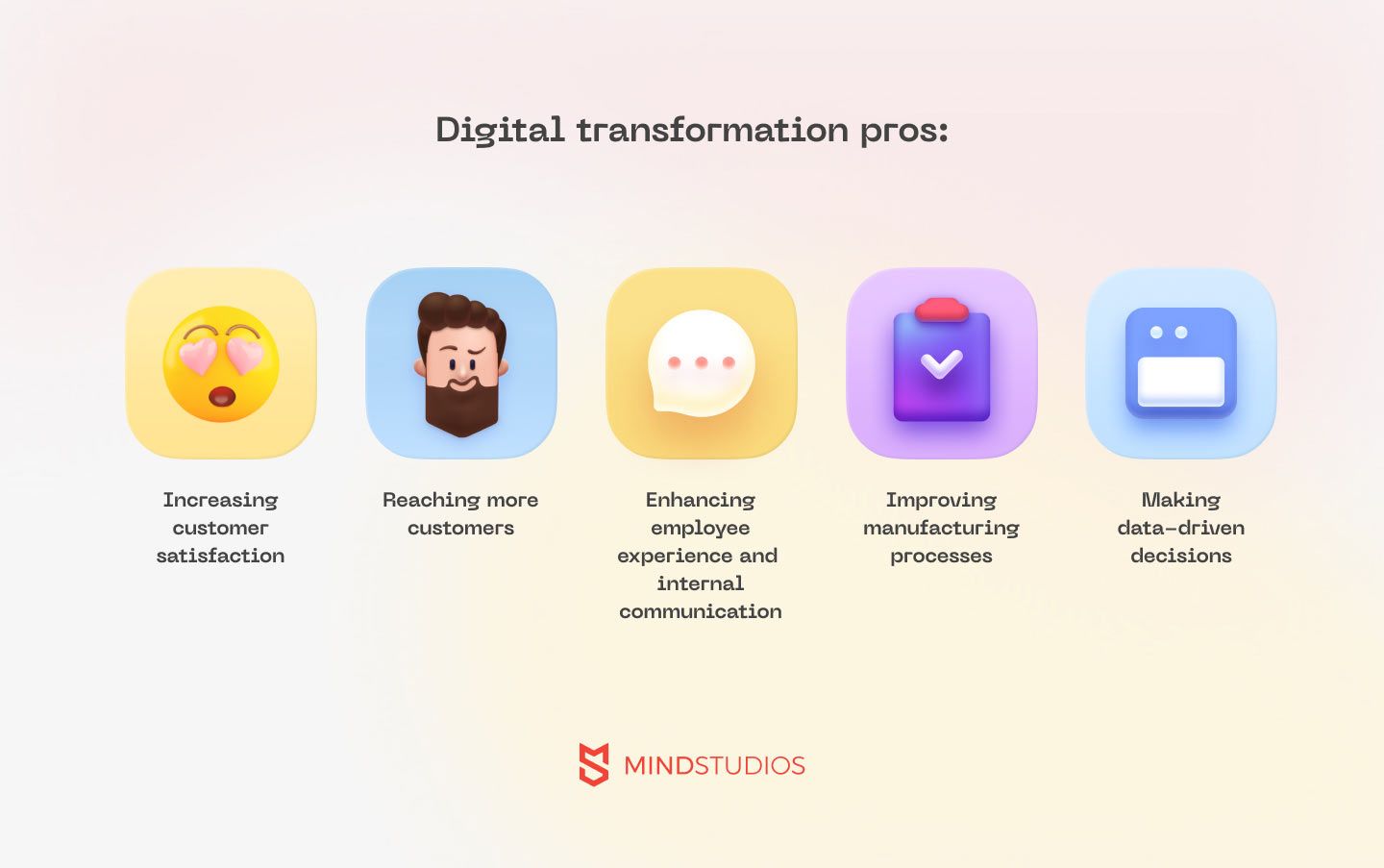
The world itself — and our lives in it — are going digital, so the first and biggest reason to start the digital transformation of your business is to ensure its basic survival. In our fast-paced environment, ignoring technology can lead to a business failure. Below are just some of the benefits of digital transformation.
Anthony Hymes, the head of digital media at Shiseido, divides digital transformation into three categories:
-
External
-
Internal
-
Data-driven
We’ve divided the benefits according to these types of digital transformation.
External digital transformation benefit #1 — Reaching more customers
It’s no secret that expanding your business’s presence online is a necessity these days. Young people spend the majority of their free time online, but even if your business caters to older generations, you’re likely to reach more people via a website or a mobile app than you would with a banner somewhere on the streets or on TV. Besides, online advertising is more reliable and can be cheaper compared to other options.
External digital transformation benefit #2 — Increasing customer satisfaction
The customer experience is front and center when it comes to transforming businesses, digitally or otherwise, and it’s one of the biggest reasons why digital transformation is so important. Customer demand is always pushing businesses to evolve. Today, the evolution demanded digital transformation.
People interact with and rely on technology more and more each year, from smartphones and social networks to smart homes, wearables, and the Internet of Things (IoT). The more comfortable technology makes our lives, the more we expect from the services we use.
We want our goods delivered faster, their quality to be better, and communication to be simpler. Digital transformation is essential for businesses that strive to deliver on those demands.
Often, digital transformation takes the form of developing new websites and mobile applications. The development of telemedicine platforms is a great example. In 2019, before the COVID-19 pandemic, the telemedicine industry was already worth $45 billion and was rapidly growing. The reason was that it’s way more convenient for patients to talk to their doctors via a video call than to go to the hospital.
In 2020, this convenience became a necessity. And while we hope it goes back to just being a convenience, there’s no denying that the digital transformation of healthcare is well underway.
Internal digital transformation benefit #1 — Enhancing employee experience and internal communication

Emails aren’t cutting it anymore — they’re too cluttered, unreliable for delivering urgent messages, and can take ages to write and send. On the other hand, internal communication software not only creates order where chaos ruled but can positively impact corporate culture, make employees more engaged in the company’s affairs, and help to better organize interdepartmental collaboration. All this improves the employee experience, reduces stress, and potentially can make your business’s operations smoother and of better quality.
Internal digital transformation benefit #2 — Improving manufacturing processes
Business processes and the employee experience aren’t the only parts of a business you can improve with technology. Digital transformation in manufacturing has been gaining popularity for a while. Digital solutions can make operations smoother, faster, and safer, and in the long run, they can also be a budget saver.
Benefits of data-driven transformation
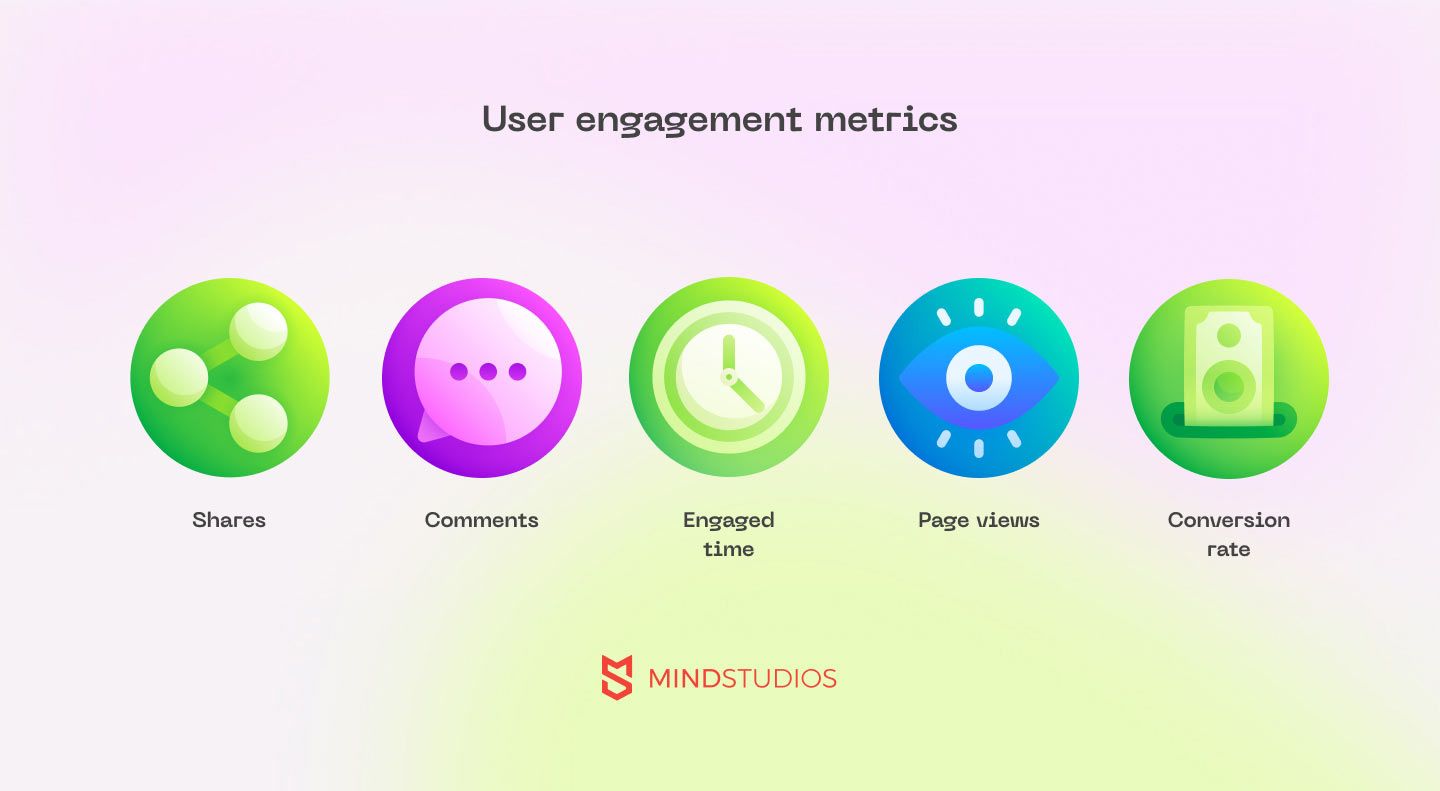
Expanding online means you can access user engagement metrics and use that data to make better decisions. How users engage with your digital product — whether it’s a website or an app — is easier to track than users’ offline behavior. It’s also easier to get feedback from customers online than it is offline. This means you can get to know your customers better, find out their pains, adjust your strategy, and successfully serve them the products they need. And voilà — your reputation improves, more customers try your product, and your ROI skyrockets. All pros.
Digital business transformation examples for different industries
Companies are undergoing digital transformation all around the world and across industries. Several examples of digital transformation stand out, making them perfect case studies to turn to when you decide to embark on this journey with your business.
Microsoft

Microsoft’s venture into the market of mobile devices was fairly brief and largely unsuccessful. Their smartphones couldn’t stand up to competition against Apple and Google despite Windows being the most popular desktop operating system in the world with approximately 80% OS market share at the time. Being pushed by Apple on the desktop market as well, Microsoft had to act to keep afloat. And they did.
Abandoning the ambitions of conquering mobile markets, Microsoft has started their digital transformation in 2014, moving Windows systems to innovative cloud solutions. This was a customer-first approach, making Windows way more comfortable to use compared to before. A series of partnering agreements were also signed and in 2021, Microsoft shares cost $235 against $38 in 2014.
Starbucks digital transformation

The Starbuck digital transformation story might be an inspiration today as it has started during the recession of 2008. For companies that don’t provide basic consumer products, a worldwide economic recession is always especially tough. And Starbucks isn’t exactly known for its low prices. What helped Starbucks stay afloat and even prosper is its innovative business strategy that revolved around customers.
The company built a mobile app that (a) allowed customers to avoid lines by ordering and paying online, and (b) offered loyalty benefits that were relatively easy to obtain. For customers, it added the incentive to choose Starbucks over other coffee shops. For Starbucks, besides financial profits, it helped rearrange personnel from registers to serving and kitchen, expanded the company’s customer base, and improved reputation.
However, the company didn’t stop there, they took full advantage of the data they could now gather about users’ preferences and in-app behavior. Starbucks used the data and machine learning technology to personalize ads and offer customers drinks most to their tastes.
The result of Starbucks’s digital transformation is the growth of revenue from $9.8 billion in 2009 to $26.51 billion in 2019.
Ford

Ford Motor Company is a perfect example of digital transformation in manufacturing. In 2006, Ford decided to overhaul its manufacturing processes. The company reallocated its IT budget, taking 30% of it from supporting outdated systems and using it on updating its manufacturing software instead. This allowed Ford to centralize the business, simplify product lines, create Ford SYNC and MyFord Touch, and set up data collection and analysis processes, which resulted in enhanced customer satisfaction.
IKEA digital transformation

In 2017, IKEA has launched two projects: the IKEA Place mobile app and the Space10 R&D lab. IKEA Place was an innovative kind of app for retail, it employed Augmented Reality (AR) to allow users to check how a piece of furniture would look with the room’s interior.
Space10, on the other hand, explores trends and innovations in the world with the aim of implementing them into the interior and exterior design and furniture manufacturing. Anyone can apply to the project’s beta to participate and offer feedback. Both projects are customer-centric and employ the newest technologies to engage the public. As a result, IKEA saw steady growth in revenue, reaching €41.3 billion in 2019.
Amazon

Wherever you look, retail companies go through a digital transformation at a speed, competing with each other. Amazon is no exception, even though it’s been a market leader for years. Its latest spin in the direction of digital transformation is Amazon GO, a series of cashier-less stores that is the manifestation of futuristic dreams.
Amazon combined everything digital there is to combine for a retailer: a mobile app, sensors, deep machine learning, and computer vision all work together to allow customers to enter the store, take whatever they need, and just walk out (which is the slogan the project uses — the Just Walk Out Experience). The payment is carried out automatically upon leaving the store so customers don’t need to wait in lines.
Amazon is one of the great digital transformation retail case studies that saw a leap in stock prices during the pandemic year.
How to build a digital transformation strategy for your business
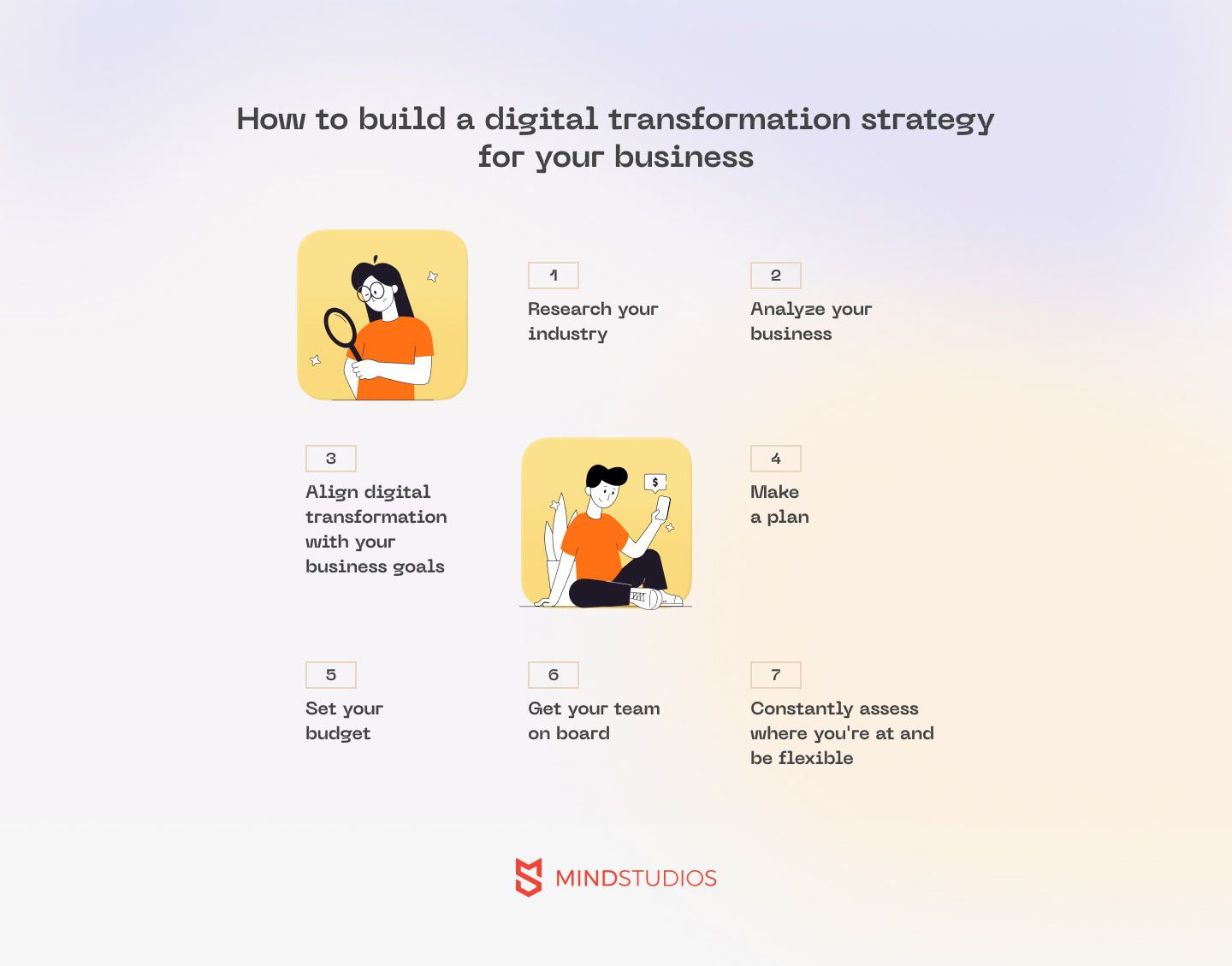
First of all, let’s remember that digital transformation is more than just adding technology here and there. It's based on a holistic view of how you want your business to develop in the future. And that’s why you need to build a strategy before you start spending time, effort, and money on random acts of digitalization.
In digital business transformation, the actions you take must be interwoven with each other and with your business’s general direction. Sometimes, in the process of creating a digital transformation strategy, you’ll find you need to adjust aspects of your business to better meet your customers’ demands and reach your goals. So here’s a short-ish guide to creating your digital transformation strategy.
1. Research your industry
Any changes that have a chance to be successful are driven by research. Digital transformation in business is no exception. Before you write up your own digital transformation strategy, check out the current state of the market. What is the demand for digital solutions in your niche? How are your customers dealing with tech solutions? What do they need in ways of digital tools? Have your competitors started to implement digital technologies? To what scale and effect?
You need to gather and analyze data so you don’t throw your time and money away for nothing. Make data-driven decisions even before you transform your enterprise. You can employ digital transformation agencies to help with data-driven decision-making.
2. Analyze your business
Once you’ve grasped what the world demands of you, define what needs to change in your business’s communication with customers. There are two common scenarios:
-
Your product is losing its attractiveness and needs to be adjusted to meet users’ needs
-
The way you bring your product to your customers is getting old and needs to be refreshed
One of the best and most often mentioned examples of digital transformation in the first scenario is Netflix. When technology reached a point where streaming was easy, Netflix swiftly transformed from a movie rental platform to a world-leading streaming platform. They changed the product to make it more accessible and convenient for their customers.
The second scenario is the one faced by every retailer today with a website or app. Products haven’t changed, as they’re still physical. However, the way users access stores and their products and how those products are sold and delivered has changed drastically.
The two scenarios above both pertain to the customer-facing side of your business. But you also need to review your internal processes and apply a digital-first approach to them. You need to assess everything from internal communication software to software that aids manufacturing processes to third-party collaboration tools and consider what changes to make to achieve better internal processes.
3. Align digital transformation with your business goals
Your digital transformation strategy must fit with your overall business goals. Otherwise, you’re practicing digitalization and not digital transformation. Digitalization is basically just adding digital processes where you think they’re needed. It’s part of digital transformation, yes. But digital transformation is more than that — it’s making changes with digital innovations in order to reach your business goals.
4. Make a plan
Put it all on paper. Or, rather, in a digital document. Documentation is important for a digital transformation strategy. A definite plan isn’t only a list of actions you’re planning to take for online business transformation. You need to set priorities for each part of the process. Digital transformation can’t be done all in one go; it’s too complex a process. Which aspects are urgent and which can wait? Maybe some stages of digital transformation rely on the results of other stages?
You need to define things like dependencies beforehand for a smooth and successful digital transformation.
5. Set your budget
Implementing digital solutions isn’t free or cheap, and you must account for possible delays and impacts on your business’s ongoing processes. Digital transformation shouldn’t stop your manufacturing, so make sure you know the funds necessary to implement your strategy and ways to secure them without burdening your business, employees, and partners.
6. Get your team on board
Digital transformation changes how your company works on many levels and is a continuous process, so it concerns everyone who works for you. To make it successful, you need to undertake a cultural change. Explain to your employees what’s going to happen, how, and why; educate people on new processes and how to work with them. Consider a personal approach to employees who might create roadblocks to your digital transformation efforts because they aren’t ready for drastic changes.
7. Constantly assess where you're at and be flexible
With no end in sight, it’s important for a digital business to always keep tabs on the small results. Analyze each step you take on the road to transformation and, if necessary, make changes according to the data immediately. At the heart of digital transformation is flexibility, which is one of its finest points. The pace of our lives is so fast that you need to be always vigilant, keep your eyes open for new trends and opportunities, and make decisions fast.
You can draw up a digital transformation strategy on your own, but there are also digital transformation companies that can help you do it. They’re well-versed in research and analysis and can build successful digital transformation strategies with experience and precision.
Measuring ROI on digital transformation
The essence of digital transformation is, at least in part, in constant experimenting and taking risks with fast decision-making. Measuring ROI on experiments isn’t easy — experiments are by nature unpredictable. However, it’s not totally impossible. Here are just a few recommendations.
|
1. Set up metrics before you start |
Decide what you aim at and choose metrics according to your ultimate goal but also separate smaller experimental stages in your plan and set micro-metrics to monitor each of them. |
|
2. Review and adjust metrics regularly |
As you go, monitor the performance continuously and adjust metrics accordingly. If the experiment fails, you’ll need to react quickly. |
|
3. Expect digital transformation to be costly |
Digital transformation involves constant experimenting, and not all experiments will be successful. Prepare beforehand to have some losses. Also, some of the bigger changes can be costly even when successful. |
|
4. Look at the bigger picture |
The growth might seem slow at a small scale but you need to look at the impact on business performance and project it to the future to keep going. |
Digital transformation: Conclusion

“Digital transformation involves managing the existing business and building for the future at the same time, something like changing the engine of the plane while in flight."
— Ashutosh Bisht, senior research manager, IDC Customer Insights & Analysis Group
According to 2019 research by IDC, by 2023, investment in digital transformation solutions will reach $2.3 trillion, or about 53% of all investments in information and communications technology. Every industry, from retail to finance to healthcare, will turn itself inside out, so to speak, to make space for technology at its core.
Moreover, the thing about digital transformation is that it's never finished. You can’t complete digital transformation — digital transformation is a culture of innovation. Trends in digital transformation today include artificial intelligence, machine learning, new metrics, omnichannel marketing, and cloud adoption, to name a few. But these trends evolve continuously. To stay afloat, you’ll need to weave it into your business’s daily routine and keep transforming as the planet rotates. And try not to fall behind.
That being said, digital transformation is a complex, albeit necessary, task, and it needs to be treated as one. It’s not to be approached lightly. We recommend hiring qualified specialists to develop your digital transformation strategy to meet your specific business needs.
At Mind Studios, we offer digital transformation services to help you with this challenge. If you’re considering undertaking digital transformation, we’ll be happy to answer any questions you might still have on the topic.



